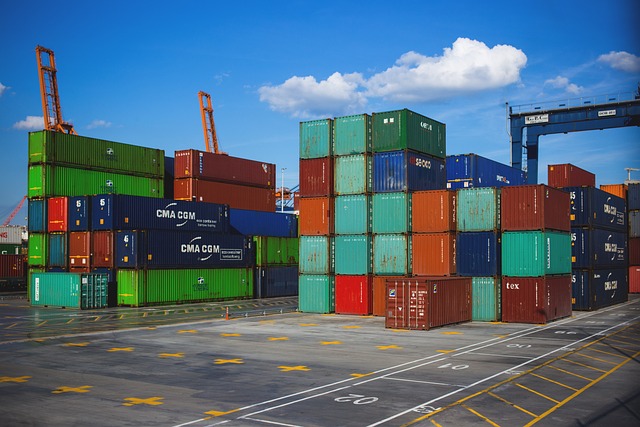Navigating the Waves of Heavy Equipment Shipping
Shipping heavy equipment can be daunting, akin to navigating uncharted waters.
Whether you’re a seasoned professional or a newcomer to the industry, understanding the intricacies of heavy equipment shipping is crucial. This guide breaks down the process into manageable waves, helping you easily sail through the challenges.
The Foundation: Know Your Equipment
Before setting sail on the heavy equipment transport journey, you must have a solid understanding of the equipment you’re dealing with. Take the time to:
- Document Specifications: Create a detailed list of specifications for each piece of equipment. Include dimensions, weight, and any special handling requirements. This document will be your compass throughout the shipping process.
- Photographic Evidence: A picture is worth a thousand words. Take clear photographs of the equipment from various angles. This helps document the condition and serves as insurance against any damage claims.
Setting Sail: Choosing the Right Shipping Method
With your equipment details in hand, it’s time to choose the right vessel for your shipping adventure. Consider the following options:
- Container Shipping: Ideal for smaller equipment, container shipping provides a secure, enclosed environment. It protects against the elements and offers ease of tracking.
- Flat Rack Shipping: Flat rack shipping is a flexible option for larger or oddly shaped equipment. The equipment is secured to a flat rack, allowing for versatility in loading.
- Roll-on/Roll-off (RoRo) Shipping involves driving the equipment onto the vessel. It’s efficient but may not be suitable for all types of heavy machinery.
- A lot of heavy equipment also relies on multiple parts to operate. For example, an automated tablet press machine requires programmable logic controllers from various manufacturers. It might be worth shipping your Simens, Omron or B&R components separately to avoid damage.
Navigating Regulatory Waters: Understand Regulations and Permits
Every port has its own set of rules and regulations. Before you embark on your heavy equipment shipping journey, familiarize yourself with:
- Import/Export Regulations: Different countries have varying regulations governing the import and export of heavy equipment. Ensure compliance with both the origin and destination countries.
- Customs Documentation: Prepare all necessary customs documentation. This includes invoices, bills of lading, and any permits required by the authorities.
- Permits for Oversized Loads: If your equipment exceeds standard size limits, secure the necessary permits for transporting oversized loads. Failure to do so can lead to delays and fines.
Charting the Course: Planning the Logistics
Smooth navigation requires meticulous planning. Create a comprehensive logistics plan that covers:
- Route Planning: Choose a route that accommodates the size and weight of your equipment. Check for any road restrictions or construction that may impact your journey.
- Transportation Partners: Select reliable transportation partners. Whether trucking, rail, or a combination, ensure they have experience handling heavy equipment.
- Contingency Plans: Anticipate challenges and have contingency plans in place. Weather delays, mechanical issues, or unforeseen circumstances can arise, so be prepared to navigate these waters.
Staying Afloat: Insurance and Risk Mitigation
In the unpredictable seas of heavy equipment shipping, insurance is your lifebuoy. Take the following steps to safeguard your cargo:
- Comprehensive Insurance: Invest in comprehensive insurance coverage for your equipment. This includes coverage for damage, loss, and any potential liabilities.
- Risk Assessment: Conduct a thorough risk assessment. Identify potential risks during transportation and implement measures to mitigate them.
- Real-Time Tracking: Utilize technology for real-time tracking of your shipment. This provides visibility into the location and condition of your equipment throughout the journey.
Docking Safely: Receiving and Unloading
As your heavy equipment reaches its destination, the final phase of the journey begins. Ensure a smooth docking by:
- Advance Communication: Coordinate with the receiving party well in advance. Please provide them with all the necessary details for a seamless unloading process.
- Equipment Inspection: Conduct a thorough inspection upon arrival. Check for any damages that may have occurred during transit and document them promptly.
- Professional Unloading: Depending on the equipment, use professional services for unloading. Cranes, forklifts, or specialized equipment may be necessary for safe and efficient unloading.
Anchoring for the Future: Continuous Improvement
Every successful heavy equipment shipping journey is a learning experience. After the cargo has safely arrived, take the time to:
- Post-Shipment Review: Evaluate the entire shipping process. Identify what worked well and areas for improvement. This feedback loop is crucial for refining your approach in future shipments.
- Build Relationships: Nurture relationships with reliable shipping partners, customs agents, and logistics providers. A strong network ensures smoother journeys in the future.
- Stay Informed: The shipping industry is constantly evolving. Stay informed about regulatory changes, new technologies, and best practices to stay ahead of the curve.
In conclusion, navigating the waves of heavy equipment shipping requires careful planning, adherence to regulations, and continuous improvement.
By understanding your equipment, choosing the right shipping method, navigating regulatory waters, planning logistics, mitigating risks, and ensuring a smooth reception at the destination, you’ll survive and thrive in the vast ocean of heavy equipment shipping.







